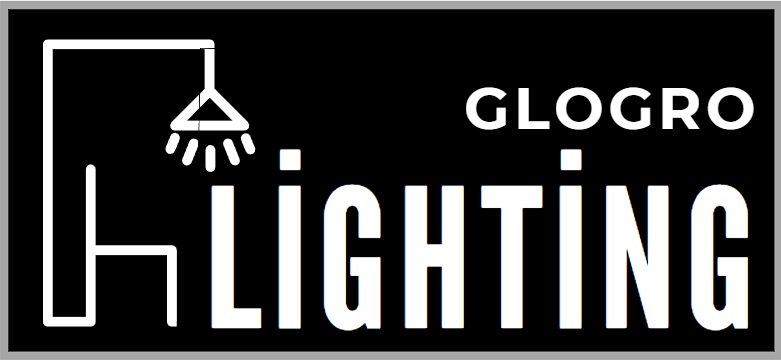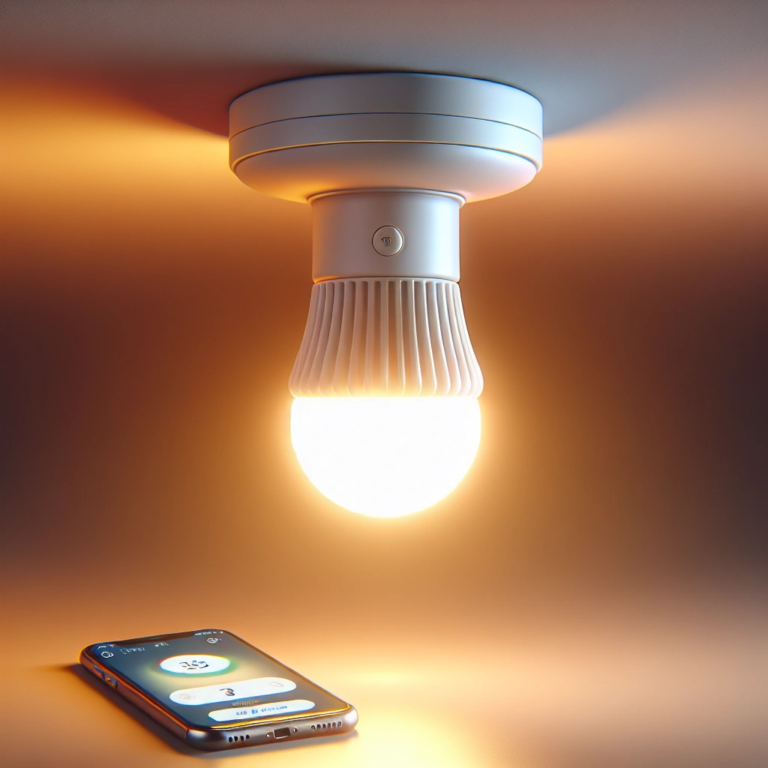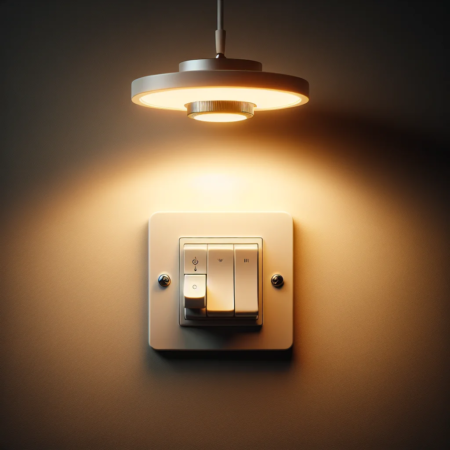Check out this Youtube video to learn about the perks and potential hassles of using smart bulbs in ceiling lights.

Contents
Understanding Smart Bulbs for Ceiling Lights
Smart bulbs for ceiling lights are revolutionary lighting solutions that can be controlled remotely using a smartphone, tablet, or smart home automation system. They work by connecting to a home network via Wi-Fi, Bluetooth, Zigbee, or Z-Wave and can be managed through a dedicated hub or directly through a smart device. The benefits of using smart bulbs in ceiling lights include energy efficiency, customization options, home security features, easy installation and use, and compatibility with smart home systems, making them a convenient and energy-efficient way to illuminate your home and enhance overall security.
What are smart bulbs?
Smart bulbs are revolutionary lighting solutions that can be controlled remotely using a smartphone, tablet, or smart home automation system. These bulbs are equipped with built-in wireless connectivity and can be dimmed, brightened, or even change colors with a simple tap on a mobile app.
They come in various standard shapes and sizes, such as A19 and BR30, making them suitable for different types of light fixtures.
How do smart bulbs work?
Smart bulbs are connected to a home network via Wi-Fi, Bluetooth, Zigbee, or Z-Wave and can be managed through a dedicated hub or directly through a smart device. This connection allows users to remotely adjust the brightness, color temperature, and on/off schedules through a mobile app.
Some advanced smart bulbs are even compatible with voice assistants like Alexa and Google Assistant, enabling hands-free control for added convenience.
Benefits of using smart bulbs in ceiling lights
| Benefits | Details |
|---|---|
| Energy Efficiency | Smart bulbs use LED technology, consuming less energy compared to traditional incandescent bulbs. |
| Customization Options | Users can change the color and brightness of the smart bulbs, creating different ambiance for any occasion. |
| Home Security | Smart bulbs can be programmed to turn on and off at specific times, creating an illusion of occupancy. |
| Easy Installation and Use | Smart bulbs are easy to install and operate, making them suitable for both homeowners and renters. |
| Compatibility with Smart Home Systems | They seamlessly integrate with smart home ecosystems, offering centralized control over lighting. |
Smart bulbs are a convenient and energy-efficient way to illuminate your home, offering an array of customizable options and enhancing overall security. By understanding how smart bulbs work and the benefits they provide, homeowners can make informed decisions to upgrade their ceiling lights and transform their living spaces into smart, efficient, and vibrant environments.
Compatibility of Smart Bulbs with Ceiling Lights
Yes, smart bulbs can be used in ceiling lights. However, it is essential to consider factors such as fixture type, dimmer compatibility, Wi-Fi connectivity, smart hub integration, and brightness/color temperature to ensure compatibility and optimal performance. It’s important to select smart bulbs that are suitable for the specific type of fixture in your ceiling lights, whether it’s standard sockets or recessed fixtures. Additionally, ensuring compatibility with dimmer switches and the availability of a stable Wi-Fi connection are crucial for seamless integration and control. Consideration of factors such as smart hub integration and brightness/color temperature will also help to create the desired ambiance in the space.
Can you use smart bulbs in ceiling lights?
Yes, you can use smart bulbs in ceiling lights, but there are some factors to consider to ensure compatibility and optimal performance.
Factors to consider for using smart bulbs in ceiling lights
-
Fixture Type: Ensure that the smart bulbs are compatible with the type of fixtures in your ceiling lights. Some smart bulbs are designed specifically for standard sockets, while others may be suitable for recessed or specialty fixtures.
-
Dimmer Compatibility: If your ceiling lights are connected to a dimmer switch, it’s essential to choose smart bulbs that are compatible with dimmer switches. Not all smart bulbs support dimming functionality, so selecting the right ones is critical.
-
Wi-Fi Connectivity: Consider the connectivity of the smart bulbs. Some smart bulbs require a stable Wi-Fi connection to function optimally, so ensure that your ceiling lights are within the range of your Wi-Fi network.
-
Smart Hub Integration: If you have a smart home hub or system, check if the smart bulbs are compatible with the hub for seamless integration and control.
-
Brightness and Color Temperature: Evaluate the brightness and color temperature of the smart bulbs to ensure they align with your preferences and the ambiance you want to create in the space.
Best smart bulb brands for ceiling lights
Here are some top smart bulb brands that are well-suited for ceiling lights:
| Brand | Features |
|---|---|
| Wyze Bulb | Affordable and versatile smart bulbs. |
| Philips Hue | Offers a wide range of smart bulb options with varying features such as color-changing capabilities. |
| LIFX | Known for producing bright and vivid smart bulbs with Wi-Fi connectivity. |
| Sengled | Provides various smart bulb options, including white and color-changing bulbs. |
| Govee | Offers smart bulbs with Bluetooth and Wi-Fi connectivity, suitable for different lighting needs. |
When choosing smart bulbs for your ceiling lights, it’s essential to consider factors such as compatibility, connectivity, and features to ensure a seamless and enjoyable lighting experience.
Installation and Setup Process for Smart Bulbs in Ceiling Lights
Step-by-step guide to installing smart bulbs in ceiling lights
To install smart bulbs in ceiling lights, first, turn off the power to the light fixture by flipping the breaker switch. Once the power is off, remove the old light bulb and fixture if necessary.
Then, install the smart bulb into the socket just as you would with a regular bulb and ensure it is secure. It’s important to note that smart bulbs come in different sizes, so make sure to choose one that fits your ceiling light fixture.
Once the bulb is installed, test it by turning the power back on.
Next, if you’re using multiple smart bulbs in the same room, make sure they are all compatible with the same smart home system, such as Alexa or Google Home. This will enable you to control them simultaneously.
If you’re unsure about compatibility, check the manufacturer’s specifications or consult with a smart home expert.
In case you’re setting up a dimmable smart bulb, ensure that your ceiling light has a dimmer switch that is compatible with smart bulbs. If not, you may need to replace the dimmer switch with a smart dimmer switch for seamless integration.
Connecting smart bulbs to a smart home system
Connecting smart bulbs to a smart home system is relatively straightforward. Start by downloading the corresponding app for your smart bulb, then follow the app’s instructions to connect the bulb to your home Wi-Fi network.
Ensure your smartphone is connected to the same Wi-Fi network during this process. Once the bulb is successfully connected to your network, you can link it to your smart home system using the app and enjoy controlling your lights via voice commands or a tap on your smartphone.
Here’s a basic overview of the installation and setup process for smart bulbs in ceiling lights:
| Step | Description |
|---|---|
| 1 | Turn off the power to the light fixture |
| 2 | Install the smart bulb into the socket |
| 3 | Test the smart bulb by turning the power back on |
| 4 | Establish compatibility for multiple smart bulbs |
| 5 | Ensure compatibility with dimmer switches for dimmable bulbs |
| 6 | Download the corresponding app for the smart bulb |
| 7 | Connect the bulb to your home Wi-Fi network |
| 8 | Link the bulb to your smart home system using the app |
This comprehensive installation and setup guide ensures a seamless transition to the world of smart lighting, making your home smarter and more energy-efficient.
Advantages and Disadvantages of Using Smart Bulbs in Ceiling Lights
Smart bulbs offer energy efficiency, remote control convenience, customization options, enhanced home security, and seamless integration with smart home systems. However, they come with a higher initial cost, dependence on technology, potential privacy concerns, complex setup, and reliance on a stable power source. Therefore, the advantages of using smart bulbs in ceiling lights include enhanced functionality and energy efficiency, while the disadvantages revolve around cost and technological dependence.
Pros of using smart bulbs in ceiling lights
-
Energy Efficiency: Smart bulbs, being LED lights, are highly efficient, consuming less energy compared to traditional incandescent bulbs. This can lead to significant cost savings on electricity bills.
-
Remote Control: Smart bulbs allow for remote control, enabling users to turn the lights off or on from anywhere using a smartphone or other compatible devices. This feature provides convenience and also helps in conserving energy by avoiding unnecessary usage.
-
Customization: These bulbs offer customization options for color and brightness, allowing users to create different lighting “scenes” to match their mood or preferences.
-
Home Security: Many smart bulbs come with motion-detection capabilities, contributing to enhancing home security. They can be programmed to turn on when motion is detected, creating the illusion of occupancy when homeowners are away.
-
Integration with Smart Home Systems: Smart bulbs can be seamlessly integrated with smart home systems, enabling enhanced automation and control of the lighting environment.
Cons of using smart bulbs in ceiling lights
-
Initial Cost: The upfront cost of purchasing smart bulbs is often higher compared to traditional light bulbs, which can be a deterrent for some consumers.
-
Dependence on Technology: Smart bulbs rely heavily on technology and may be susceptible to issues such as connectivity problems, software glitches, or compatibility issues with other smart devices.
-
Privacy Concerns: While smart bulbs offer convenience and functionality, they may raise privacy concerns as they collect and transmit data. Users need to be mindful of the potential implications of having connected devices in their homes.
-
Complex Setup: Setting up and configuring smart bulbs may require technological know-how, and some users might find the installation and integration process daunting and time-consuming.
-
Reliance on Power Source: Smart bulbs are dependent on a stable power source and may not function during power outages unless integrated with backup power solutions.
| Pros of using smart bulbs in ceiling lights | Cons of using smart bulbs in ceiling lights |
|---|---|
| Energy Efficiency | Initial Cost |
| Remote Control | Dependence on Technology |
| Customization | Privacy Concerns |
| Home Security | Complex Setup |
| Integration with Smart Home Systems | Reliance on Power Source |
Smart bulbs have transformed the way we think about lighting. The ease of control and the ability to adjust brightness and color with a simple tap on a smartphone has revolutionized home lighting.
Smart bulbs offer the flexibility to change color, dim to any brightness level, and even sync with music or TV, providing a dynamic and immersive lighting experience.
However, it’s essential to consider cost when contemplating integrating smart bulbs into your home’s lighting system. While the functionality and features of smart bulbs are impressive, they can be significantly more expensive per unit than traditional bulbs, especially when outfitting an entire home.
It’s important to weigh the benefits against the cost to determine if the investment aligns with your long-term lighting goals.
The decision to incorporate smart bulbs into your ceiling lights ultimately depends on your lighting preferences, lifestyle, and budget. While they offer unparalleled convenience and customization, the higher price point may cause hesitation for some homeowners.
Before making the transition, it’s crucial to conduct thorough research, consider long-term cost implications, and evaluate how smart lighting aligns with your home’s overall aesthetic and functionality.
Below is a comprehensive breakdown of the advantages and disadvantages of smart bulbs compared to traditional light bulbs:
| Aspect | Advantages | Disadvantages |
|---|---|---|
| Cost | Energy efficiency and sustainability | Higher unit cost |
| Functionality | Flexibility in adjusting brightness levels and creating various lighting effects | Reliance on technology |
| Market Trends | Promising advancements in smart lighting technology, prioritizing energy efficiency and sustainability | Higher cost compared to traditional light bulbs |
| Homeowner Preference | Strong trend among homeowners for integrating smart lighting into their homes | Considerable expense when outfitting an entire home |
| Overall Assessment | Unparalleled convenience and customization, but with a potentially prohibitive cost | Need for comprehensive research and long-term cost evaluation |
This comprehensive assessment underscores the need to carefully weigh the pros and cons when considering a transition to smart bulbs. While the allure of advanced functionality is strong, it’s crucial to ensure that the decision aligns with your long-term lighting goals and fits within your budget constraints.
Smart bulbs offer a tantalizing array of features, from customizable lighting effects to seamless integration with smart home systems. However, the decision to embrace this futuristic lighting technology should be thoughtful and thorough, considering both the benefits and the cost implications.
As the smart lighting landscape continues to evolve, it’s essential for consumers to stay informed and make informed decisions that align with their unique lighting preferences and lifestyle.





